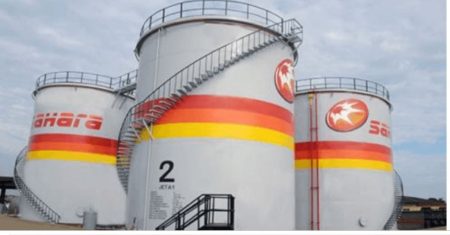The Organization of the Petroleum Exporting Countries and its allies (OPEC+) are poised to further accelerate oil output increases, signaling a potential shift in strategy amidst ongoing efforts to unwind previously implemented production cuts. This move comes on the heels of the group’s recent decision to accelerate the easing of cuts for June, adding another layer of complexity to the already volatile oil market. The potential for increased output stems from concerns over compliance with existing production quotas among some member nations. Sources suggest that OPEC+ may fully unwind its 2.2 million barrels per day of voluntary cuts by the end of October if these compliance issues persist.
This latest development follows a surprising decision by OPEC+ in April to accelerate the unwinding of production cuts despite prevailing weakness in oil prices and demand. This move, reportedly orchestrated by Saudi Arabia, the de facto leader of OPEC+, was interpreted as a punitive measure against members failing to adhere to their assigned production quotas. The April decision underscores the internal dynamics within OPEC+ and the influence wielded by key players like Saudi Arabia in shaping the group’s overall strategy. The accelerated unwinding of cuts represents a significant departure from earlier, more cautious approaches and underscores the growing tension between maintaining price stability and addressing individual members’ production levels.
The recent agreement by OPEC+ to increase output for June, adding nearly one million barrels per day to the market across April, May, and June, further solidifies the trend towards increased production. This trajectory is expected to continue, with another potential increase of 411,000 barrels per day slated for July. Furthermore, sources indicate that even larger output hikes are under consideration for August, September, and October. These increases are contingent on improved compliance and compensatory cuts from countries like Iraq and Kazakhstan, which have lagged in meeting their production targets. The potential for accelerated increases adds a new dimension to OPEC+’s strategy, indicating a willingness to leverage production levels as a tool to enforce compliance within the group.
The possibility of completely unwinding the 2.2 million barrels per day of voluntary cuts by November looms large if compliance issues remain unresolved. This represents a significant portion of the overall cuts currently in place, highlighting the seriousness with which OPEC+ is approaching the issue of quota adherence. Despite the planned increases, OPEC+ still maintains a substantial reduction in output of nearly five million barrels per day, with many of these cuts scheduled to remain in effect until the end of 2026. This underscores the balancing act OPEC+ faces between managing market stability and addressing internal compliance challenges.
The context surrounding these developments is further complicated by recent market fluctuations. Oil prices plummeted to a four-year low in April, dipping below $60 per barrel, driven by the accelerated OPEC+ hikes and concerns about a global economic slowdown triggered by US trade policies. This price drop adds pressure on OPEC+ to navigate the complex interplay between production levels, market demand, and global economic conditions. Reports indicate that Saudi Arabia, a key player in OPEC+, is reluctant to implement further supply cuts to support prices, signaling a potential shift in the group’s approach to market management. This stance reflects a possible recalibration of strategy, perhaps prioritizing internal discipline and market share over artificially propping up prices.
The internal dynamics within OPEC+ are further highlighted by Kazakhstan’s recent defiance, prioritizing national interests over OPEC+ quotas when determining its oil production levels. This action underscores the inherent tensions within the group and the challenge of maintaining unity in the face of diverging national priorities. Against this backdrop of internal maneuvering and market volatility, the Nigerian National Petroleum Company Limited (NNPCL) has reduced its domestic petrol price, aligning with prices offered by other market players. This domestic price adjustment within Nigeria, while seemingly unrelated, highlights the interconnectedness of global oil markets and the ripple effects of OPEC+ decisions on individual economies. The NNPCL’s move reflects the complex interplay of global and local factors influencing fuel pricing and underscores the multifaceted nature of the oil market landscape.














